Style Guide: Biomechanical and Bioorganic Tattoos
Everything about Biomechanical and Bioorganic tattoos, which combine nature, science fiction, and realism to depict what’s beneath the skin.
- Both styles seek to illustrate what lies beneath the skin, heavily influenced by science fiction, realism, and combining elements of the natural world with more supernatural ones.
- Bioorganic tattoos incorporate elements of only the “natural” earth, which can include human beings, the bones of animals and other creatures, whereas Biomechanical tattoos will have a similar design but will infuse it with machinery and artificial technology.
- In general, expect to pay a little more for these tattoos, if only for the complexity that goes into making them. It’s not quite the same as selecting a design off a flash sheet and slapping a stencil on to your placement of choice.
- What Should I Look For in a Biomechanical or Bioorganic tattoo?
If you’re looking for a truly one-of-a-kind tattoo design, you might look no further than a Biomechanical or Bioorganic tattoo. These styles are about as custom as tattoos get, given that they are designed specifically to the person who will wear them, made to fit seamlessly with the anatomy of that individual’s body. Both styles seek to illustrate what lies beneath the skin, heavily influenced by science fiction, realism, and combining elements of the natural world with more supernatural ones.
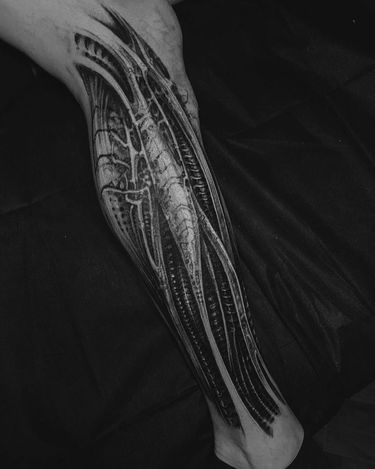
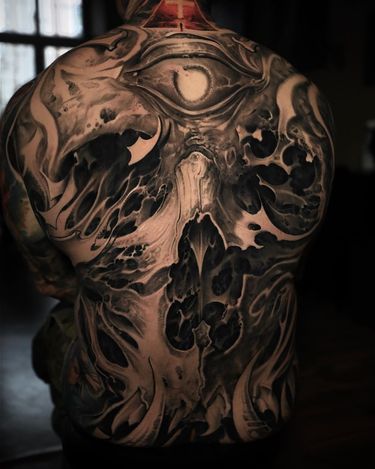
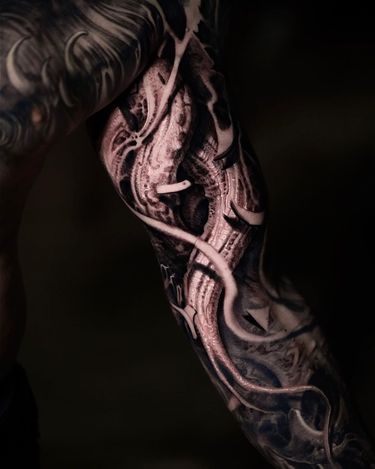
What’s the Difference?
These styles have a lot of similarities, but the main difference is that Bioorganic tattoos incorporate elements of only the “natural” earth, which can include human beings, the bones of animals and other creatures, whereas Biomechanical tattoos will have a similar design but will infuse it with machinery and artificial technology. We say “natural” in quotation marks because while Bioorganic tattoos are inspired by natural and anatomical structures and parts, they can get otherworldly in the sense that the imagined anatomy of aliens can be incorporated into these designs. Aliens are “organic,” after all. Bioorganic tattoos fuse man and nature, while Biomechanical tattoos fuse man and machine.
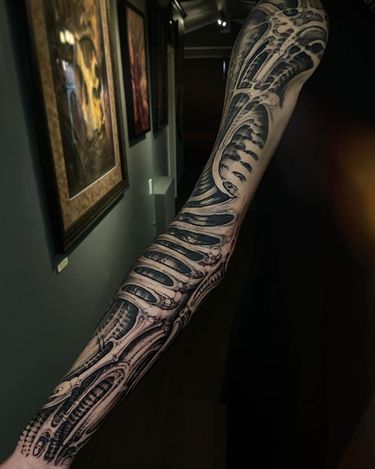
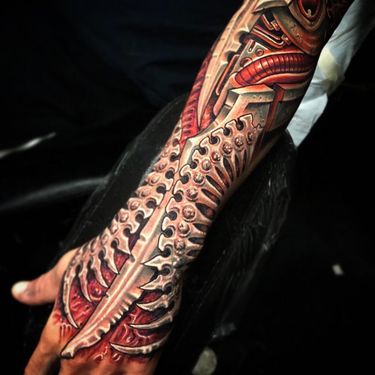
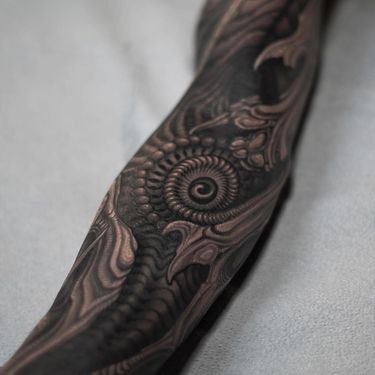
Both styles came into vogue in the aftermath of the seminal 1979 science fiction film Alien. In many ways, the Swiss artist H.R. Giger, responsible for the film’s artistic vision, spearheaded this style. Biomechanical and Bioorganic tattoos became popular due to the film’s success, with the first examples taking inspiration from the artworks Giger published in his Necronomicon books. Peruvian painter Boris Vallejo and American painter Frank Frazetta also offered a lot of inspiration to tattooers exploring Biomechanical and Bioorganic styles.
What Should I Look For in a Biomechanical or Bioorganic tattoo?
Both styles seek to incorporate the design as a part of the human body, giving insight to what lies beneath the surface. A good Biomechanical or Bioorganic tattoo will flow with your anatomy making the back, mid-section, shoulders and legs popular placements for this style of tattoo. If you’re going for a more major impact, you might consider your hands and feet as well.

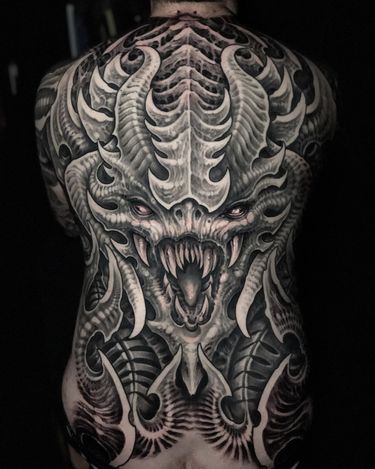
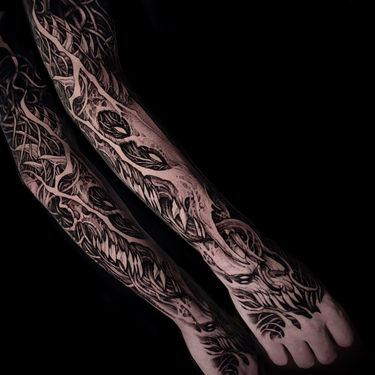
In general, expect to pay a little more for these tattoos, if only for the complexity that goes into making them. You want to find an artist that really knows what they’re doing here, because they must design the tattoo to effectively fit with your unique form. It’s not quite the same as selecting a design off a flash sheet and slapping a stencil on to your placement of choice.


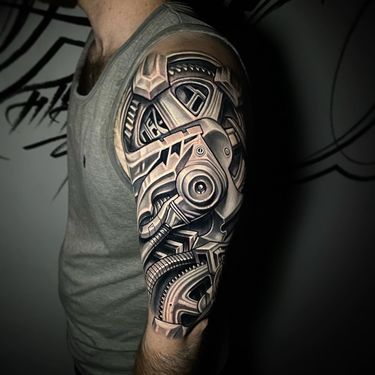
As far as color palette, these designs are pretty open-ended. You might see an all black and grey palette, like in the work of Jeremiah Barba, while others utilize bright colors, and many begin with a base of muted or gray hues and incorporate splashes of bright color for emphasis, more like Rember Orellana or Roman Abrego’s tattoos. Sometimes you will see a skin “rip” element, to give a more realistic illusion, but not always. The main element that will delineate a Biomechanical tattoo from a Bioorganic one is the incorporation of machine elements – think steel bars and gears in place of bones and joints.
So like we said, if you’re looking for a tattoo that is truly only yours, in the sense that it couldn’t possibly be recreated on another’s person’s body, then these might be the styles for you.
Article by: Mandy Brownholtz
